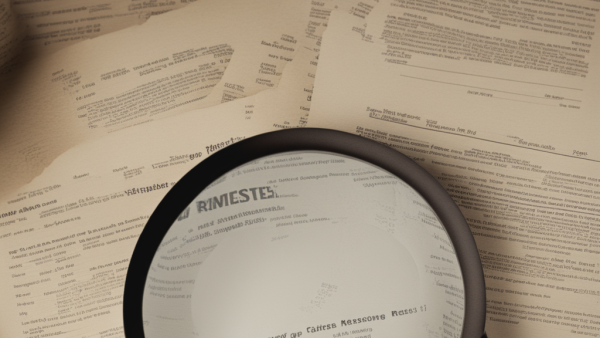
Last updated: January 12, 2024
In the intricate world of finance, the term 'Special Purpose Vehicle' or SPV often surfaces. An SPV is a subsidiary entity created by a parent company, designed to serve a specific purpose. This purpose can range from isolating financial risk to securitising assets, and even conducting separate financial transactions. The concept of SPVs, their types, and their role in business are all crucial aspects to understand when delving into the realm of financial risk management.
The relationship between a parent company and its SPV is a complex one. The parent company uses the SPV as a tool to manage its assets, while also benefiting from the SPV's ability to operate independently. However, this relationship is not without its risks. The SPV, while separate, is still linked to the parent company, and any missteps can have significant repercussions.
SPVs play a pivotal role in financial risk management. They are instrumental in balance sheet management, helping companies to isolate and manage their assets effectively. SPVs can also mitigate financial risk, acting as a buffer between the parent company and potential financial pitfalls. However, the use of SPVs is not without its potential risks, and these must be carefully considered and managed.
A stark example of the misuse of SPVs is the infamous Enron scandal. This case study provides a sobering reminder of the potential dangers of SPVs when used irresponsibly. The Enron scandal highlighted the role of SPVs in the company's downfall and offered valuable lessons for future financial risk management.
In conclusion, understanding SPVs and their role in financial risk management is crucial for any business. Whether it's to isolate assets, manage financial risk, or conduct separate financial transactions, SPVs offer a range of benefits. However, as with any financial tool, they must be used responsibly and with a clear understanding of the potential risks involved.
Defining Special Purpose Vehicles (SPVs)
In finance, the term 'Special Purpose Vehicle' or SPV is often thrown around. But what exactly is an SPV? Simply put, an SPV is a subsidiary company created with a specific purpose in mind. This could range from isolating financial risk to securitising assets.
Diving deeper into the concept of SPVs, they are essentially legal entities, often limited companies or partnerships, formed to fulfil narrow, specific, or temporary objectives. They are designed to function independently of the parent company, with their own obligations, assets, and liabilities.
There are various types of SPVs, each tailored to serve a unique purpose. For instance, some SPVs are created to finance large projects without putting the entire firm at risk. Others are used to own a single asset and associated permits and contract rights, making it easier to transfer that asset.
The role of SPVs in business is significant. They are instrumental in managing financial risk, enabling companies to undertake certain operations without exposing the entire organisation to potential fallout. However, it's crucial to note that while SPVs can be beneficial, they have also been implicated in financial scandals, highlighting the importance of careful management and oversight.
The Concept of SPVs
The concept of a special purpose vehicle, or SPV, is a fascinating one in the world of finance. Essentially, an SPV is a subsidiary company, created by a parent corporation with a specific purpose in mind. This purpose could be anything from undertaking a risky venture to securitising assets. The SPV is a separate entity, with its own balance sheet, and is designed to isolate financial risk from the parent company.
The beauty of an SPV lies in its flexibility. It can be moulded to fit a variety of business needs, providing a buffer against potential financial pitfalls. For instance, if a company wants to venture into a new, risky market, it can create an SPV to undertake this venture. This way, if the venture fails, the financial loss is contained within the SPV, and the parent company's assets are protected.
SPVs also play a crucial role in asset securitisation. A company can transfer assets to an SPV, which then issues securities backed by these assets. This allows the company to raise capital without increasing its debt.
However, it's important to note that while SPVs can be a useful tool for managing financial risk, they have also been used in the past to hide financial losses and misrepresent a company's financial health. Therefore, it's crucial to scrutinise SPVs along with other aspects of a company's financial statements before making any investment decisions.
Types of SPVs
Special Purpose Vehicles (SPVs) come in various forms, each designed to serve a specific purpose. In the United States, for instance, SPVs are often structured as Limited Liability Corporations (LLCs). These LLCs purchase risky assets from their parent company, group them into tranches, and sell them off. This process caters to the unique credit risk preferences of different investors.
Another type of SPV is the holding company, primarily used for the securitization of debt. This type of SPV provides assurance to investors about repayment, making it an attractive option for those looking to invest in debt securities.
Venture capitalists also use SPVs, but in a slightly different manner. They consolidate a pool of capital into an SPV to invest in a startup. This type of SPV typically makes a single investment into a business, unlike an investment fund that makes multiple investments over time.
Lastly, some SPVs are created as separate entities with their own balance sheets. These are designed to isolate financial risk, allowing corporations to undertake risky ventures while reducing any negative financial impact on the parent company and its investors. Each type of SPV serves a unique role, but all are designed to manage financial risk and facilitate business operations.
The Role of SPVs in Business
In business, SPVs play a crucial role in managing financial risk. They are often used to isolate or securitise assets, keeping them separate from the parent company's balance sheet. This can be particularly beneficial when undertaking risky projects, as it shields the parent company from the most severe consequences of failure.
SPVs also serve as a counterparty for swaps and other credit-sensitive derivative instruments. This means they can help manage the risk associated with these types of financial transactions. By acting as a separate entity, the SPV can take on the risk, leaving the parent company protected.
In addition to risk management, SPVs are also used to facilitate certain types of financial transactions. For instance, they can be used to securitise debt, providing assurance to investors that they will be repaid. This can make it easier for companies to raise capital, as investors may be more willing to invest if they know their investment is protected.
Finally, in the realm of venture capitalism, SPVs are used to pool assets for investment in startups. This allows a group of investors to come together and invest in a new business, without each investor having to take on the full risk of the investment. This can make it easier for startups to get the funding they need to get off the ground.
The Relationship Between Parent Companies and SPVs
In finance, Special Purpose Vehicles (SPVs) play a crucial role in managing financial risk. These subsidiary entities, often created by parent companies, serve as a strategic tool for isolating financial risk and undertaking specific business activities. The relationship between a parent company and its SPV is a delicate balance of benefits and risks. This section will delve into how parent companies utilise SPVs, the advantages they offer, and the potential pitfalls that need to be navigated. Whether it's for asset securitization, joint ventures, or to shield against bankruptcy, understanding the dynamics between parent companies and SPVs is key to comprehending the broader landscape of financial risk management.
How Parent Companies Use SPVs
Parent companies often utilise special purpose vehicles (SPVs) as a strategic tool for managing financial risk and enhancing operational efficiency. The primary use of an SPV is to isolate certain assets or liabilities from the parent company's balance sheet. This is achieved by transferring these assets or liabilities to the SPV, effectively shielding the parent company from potential financial risks associated with them.
Another common use of SPVs by parent companies is for raising capital. By selling assets to the SPV, the parent company can attract independent equity investors who are interested in purchasing debt obligations. This provides an indirect source of financing for the parent company, which can be particularly beneficial for managing large credit risk items.
SPVs also offer parent companies more operational freedom. As separate entities, SPVs are not subject to the same level of regulations as the parent company. This allows them to operate more flexibly and efficiently, which can be advantageous in certain business scenarios.
In some cases, parent companies may use SPVs to undertake risky ventures. By doing so, they can limit the potential negative financial impact on the parent company and its investors. This is particularly useful when venturing into new markets or developing new products.
Finally, SPVs can be used by parent companies for the securitisation of debt. This involves grouping risky assets into tranches and selling them to meet the specific credit risk preferences of different types of investors. This can help to diversify the parent company's investment portfolio and spread financial risk.
Benefits and Risks for Parent Companies
Parent companies often find SPVs beneficial for a variety of reasons. One of the main advantages is the ability to isolate financial risk. By transferring certain assets or liabilities to the SPV, the parent company can protect itself from potential financial downturns. This is particularly useful in situations where the parent company is dealing with high-risk assets or liabilities.
Another significant benefit is the opportunity for the parent company to raise capital. SPVs can issue bonds or other forms of debt, often at more favourable rates than the parent company could achieve on its own. This can provide a valuable source of funding for the parent company's operations or expansion plans.
However, it's not all rosy. There are also risks associated with using SPVs. One of the main risks is the potential for financial misrepresentation. As the financials of an SPV may not appear on the parent company's balance sheet, it can sometimes mask the true financial situation of the parent company. This can lead to investors being misled about the financial health of the company.
Additionally, while SPVs can provide protection against bankruptcy and insolvency, they can also create a false sense of security. If the SPV fails, the parent company may still be held responsible for its debts, potentially leading to significant financial losses.
Finally, the use of SPVs can lead to increased regulatory scrutiny. While SPVs often have more operational freedom than their parent companies, their activities can still attract the attention of regulators, particularly if they are used to hide liabilities or manipulate financial statements. This can lead to reputational damage and potential legal consequences for the parent company.
SPVs and Financial Risk Management
In the complex world of finance, Special Purpose Vehicles (SPVs) play a pivotal role in managing financial risk. These subsidiary entities, created by parent companies, serve as a strategic tool for balance sheet management, allowing corporations to isolate financial risk and protect their assets. SPVs can be a double-edged sword, however, offering both opportunities for risk mitigation and potential pitfalls. In this section, we delve into the intricate relationship between SPVs and financial risk management, exploring how these entities function, their role in balance sheet management, and the ways they can be used to mitigate financial risk. We'll also shed light on the potential risks associated with the use of SPVs, providing a comprehensive understanding of these financial instruments.
SPVs and Balance Sheet Management
The balance sheet management of a special purpose vehicle (SPV) is a unique aspect that sets it apart from its parent company. The SPV operates with its own balance sheet, separate from the parent company. This means that its assets, liabilities, and equity are recorded independently, providing a clear financial picture of the SPV's operations.
The separation of balance sheets between the SPV and the parent company is a strategic move. It allows the parent company to isolate financial risk, particularly when undertaking ventures that may be considered risky. By doing so, the parent company can protect its own balance sheet from potential negative impacts, thus safeguarding its financial health.
However, this separation can also create a veil of opacity. Investors may not get a complete view of the parent company's financial situation as the SPV's financials may not appear on the parent company's balance sheet as equity or debt. This can potentially mask crucial information, making it essential for investors to scrutinise both the parent company and the SPV's balance sheets before making investment decisions.
In essence, the use of SPVs in balance sheet management is a double-edged sword. While it can help manage financial risk and protect the parent company's assets, it can also obscure the full financial picture. Therefore, understanding the role of SPVs in balance sheet management is crucial for both companies and investors.
How SPVs Can Mitigate Financial Risk
The special purpose vehicle (SPV) is a powerful tool in the arsenal of financial risk management. It's designed to protect the parent company from the potential fallout of risky ventures. By creating an SPV, a corporation can embark on a high-risk project without exposing its main balance sheet to the associated risks. This is achieved by transferring the risky assets to the SPV, which then assumes the financial risk.
The SPV also serves as a buffer against bankruptcy. If the risky venture fails, the SPV can go bankrupt without dragging the parent company down with it. This is because the SPV is a separate legal entity, and its debts are not the parent company's responsibility. This separation of risk is a key feature of SPVs and a major reason why they are used in financial risk management.
Moreover, SPVs can help manage credit risk. They can purchase risky assets, such as subprime mortgage loans, and then sell them off in tranches to investors with different risk appetites. This process, known as securitization, allows the parent company to offload credit risk onto the SPV and ultimately onto the investors who purchase the tranches.
Lastly, SPVs can attract independent equity investors, providing an indirect source of financing for the parent company. This can be particularly useful when the parent company needs to raise capital but wants to avoid taking on additional debt. By selling assets to the SPV, the parent company can raise funds without increasing its debt load. This can help maintain a healthy balance sheet and reduce financial risk.
Potential Risks of Using SPVs
While SPVs can be a powerful tool for managing financial risk and balance sheets, they are not without their potential pitfalls. One of the most significant risks is the potential for misuse. In the past, some companies have used SPVs to hide financial losses, creating a false image of financial health. This can lead to significant problems for investors who may be misled by the company's apparent stability.
Another risk is the potential for increased financial complexity. SPVs often involve complex financial transactions and structures, which can make it difficult for investors and other stakeholders to fully understand the company's financial position. This complexity can also make it harder for the company to manage its financial risks effectively.
Additionally, while SPVs can provide a degree of protection against bankruptcy and insolvency, they are not immune to these risks. If the SPV fails, it can still have a significant impact on the parent company, particularly if the parent company has provided guarantees or other forms of support to the SPV.
Finally, while SPVs can provide an easy way to raise capital, they can also lead to increased financial leverage. This can increase the financial risk for the parent company, particularly in times of economic uncertainty or downturn. Therefore, while SPVs can be a valuable tool for managing financial risk, they should be used with caution and a clear understanding of the potential risks involved.
Case Study: The Enron Scandal and the Misuse of SPVs
In the annals of financial mismanagement, the Enron scandal stands out as a stark reminder of the potential misuse of Special Purpose Vehicles (SPVs). As a booming energy company, Enron's stock was soaring, leading the company to transfer a significant portion of this stock to an SPV. This move, while seemingly strategic, was the beginning of a financial catastrophe that would send shockwaves through the global economy.
The SPV, designed to hedge assets on Enron's balance sheet, was guaranteed by Enron to reduce risk. However, when Enron's stock price plummeted, the SPVs followed suit, triggering the guarantees and pushing Enron towards financial collapse. This misuse of SPVs was not the only accounting trick Enron employed, but it was a significant contributor to its downfall.
The Enron scandal serves as a case study in the misuse of SPVs, highlighting the importance of transparency and ethical financial management. Despite the clear conflicts of interest displayed on Enron's balance sheets, few investors delved deep enough into the financials to understand the gravity of the situation. This lack of scrutiny, coupled with Enron's reckless financial strategies, led to one of the most significant financial collapses in history.\n\nIn this section, we'll delve deeper into the Enron scandal, examining the role of SPVs in the company's downfall and the lessons that can be learned from this financial disaster. By understanding the misuse of SPVs in this context, we can better appreciate their potential risks and benefits in financial risk management.
Overview of the Enron Scandal
The Enron scandal, a financial catastrophe that unfolded in 2001, serves as a stark reminder of the potential misuse of Special Purpose Vehicles (SPVs). Enron, a Houston-based energy company, was seemingly thriving with its stock prices soaring. The company cleverly transferred a significant portion of this stock to an SPV, receiving cash or a note in return.
This SPV was then utilised to hedge assets that were held on Enron's balance sheet. To mitigate risk, Enron guaranteed the value of the SPV. However, when Enron's stock price plummeted, the values of the SPVs followed suit, triggering the guarantees.
Enron's manipulation of SPVs was just one of many accounting deceptions the company engaged in. Yet, it was arguably the most significant contributor to its sudden downfall. Unable to pay the enormous debts it owed to creditors and investors, Enron's financial collapse was swift and devastating.
In the end, the company's financial information, including that of the SPVs, was disclosed on balance sheets. The conflicts of interest were evident, but few investors delved deep enough into the financials to comprehend the severity of the situation. This lack of understanding and oversight led to one of the most infamous financial scandals in history.
The Role of SPVs in the Scandal
Enron's misuse of the special purpose vehicle (SPV) was a key factor in the scandal that led to its downfall. The company cleverly transferred a significant portion of its rapidly rising stock to an SPV, receiving cash or a note in return. This SPV then used the stock to hedge assets that were held on Enron's balance sheet.
To mitigate risk, Enron guaranteed the value of the SPV. However, when Enron's stock price plummeted, the values of the SPVs followed suit, triggering the guarantees. This was a risky move that backfired spectacularly, as Enron found itself unable to pay the massive sums it owed to creditors and investors when the guarantees were called into play.
The company's financial information, including details about the SPVs, was disclosed on balance sheets. However, the conflicts of interest were so deeply buried in the financials that few investors grasped the gravity of the situation.
In essence, Enron's misuse of SPVs was a ticking time bomb that eventually led to its financial collapse. This case serves as a stark reminder of the potential dangers of SPVs when used irresponsibly or for deceptive purposes.
Lessons Learned from the Enron Scandal
The Enron scandal serves as a stark reminder of the potential misuse of SPVs. It underscores the importance of transparency and ethical practices in corporate finance. Investors, for instance, should not take a company's financial health at face value. Instead, they should delve deeper into the financials of any SPVs associated with the company. Remember Enron! The SPV may mask crucial information, providing a skewed view of the company’s financial situation.
Moreover, the scandal highlights the need for adequate distance between the sponsoring company and the SPV. If the SPV becomes a vehicle for furthering the ends of the parent company, as was the case with Enron, it violates the prudential norms of corporate financing and accounting. An SPV should be able to stand on its feet, independent of the sponsoring company.
The Enron debacle also emphasises the role of regulatory bodies in ensuring that companies do not exploit SPVs for their gain. It calls for stricter regulations and oversight to prevent such financial disasters in the future.
In conclusion, the Enron scandal offers valuable lessons on the potential risks and misuse of SPVs. It serves as a cautionary tale for investors, companies, and regulatory bodies alike.
The future of Special Purpose Vehicles (SPVs) in financial risk management is a topic of great interest. As we've seen, SPVs can be a powerful tool for companies to manage financial risk, isolate assets, and undertake specific business ventures. They offer a way for companies to protect their main operations from potential financial fallout, while also providing opportunities for growth and expansion.
However, the use of SPVs is not without its risks. As the Enron scandal demonstrated, SPVs can be misused to hide financial losses and misrepresent a company's financial health. This can lead to devastating consequences for investors and the wider economy. Therefore, it's crucial for investors and regulators to scrutinise the use of SPVs and ensure transparency in their operations.
In the future, we may see more stringent regulations around the use of SPVs, particularly in relation to their role in financial risk management. This could include stricter reporting requirements and greater oversight to prevent the misuse of these entities.
At the same time, the potential benefits of SPVs should not be overlooked. When used responsibly, they can provide a valuable means of managing financial risk and facilitating business ventures. As such, SPVs are likely to remain a key feature of the financial landscape.
In conclusion, the role of SPVs in financial risk management is complex and multifaceted. While they offer significant benefits, their potential for misuse necessitates careful oversight and regulation. As we move forward, it's essential that we strike a balance between harnessing the benefits of SPVs and mitigating their risks.
Written by

Sam founded his first startup back in 2010 and has since been building startups in the Content Marketing, SEO, eCommerce and SaaS verticals. Sam is a generalist with deep knowledge of lead generation and scaling acquisition and sales.


